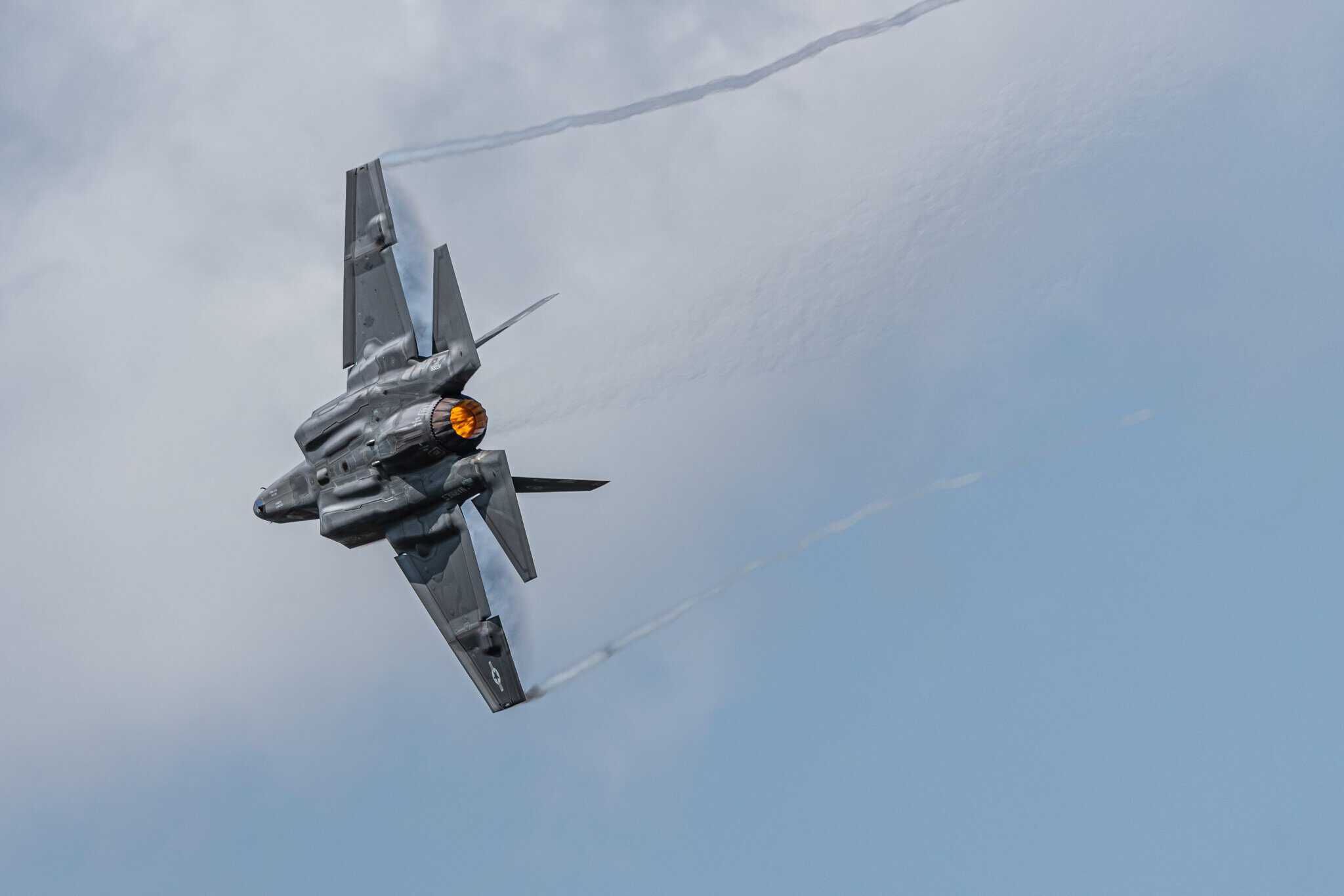The F-35 Lightning II, one of the most advanced multirole fighter jets in the world, has been a topic of much discussion among military aviation enthusiasts and professionals alike. One of the crucial aspects that often comes up in conversations about this fifth-generation stealth aircraft is its fuel consumption. While the figures may vary based on several factors, it is essential to explore how much fuel the F-35 uses and what implications this has for military operations and logistics.
The F-35 is powered by the Pratt & Whitney F135 engine, which is an evolution of the F119 engine used in the F-22 Raptor. This engine is known for its remarkable thrust and agility, contributing to the F-35’s stealth capabilities. On average, the F-35 consumes around 5,000 pounds of fuel per hour during flight, although this can vary significantly based on the mission profile, altitude, and speed. This translates to approximately 750 gallons of fuel per hour when considering that one gallon of jet fuel approximately weighs 6.84 pounds.
Fuel efficiency in military aircraft is critically important, as logistics can make or break a mission’s success. The F-35 was designed with various mission profiles in mind, including air-to-air combat, strike missions, and close air support. Depending on the mission, the aircraft’s fuel usage can differ considerably. For example, during combat maneuvering or high-speed pursuits, fuel consumption can increase substantially, while more strategic mission profiles might allow for more fuel-efficient operation.
Moreover, the F-35’s range is affected by its fuel capacity and consumption rate. The aircraft can carry about 14,000 pounds of internal fuel, which allows for a range of approximately 1,380 miles without refueling. This impressive range is partly due to its design, which incorporates advanced aerodynamics and systems that optimize fuel usage. However, combat readiness often requires in-air refueling capabilities, especially during extended missions or when operating far from bases.
From a logistics perspective, the fuel consumption of the F-35 becomes crucial when planning deployment and operations. The U.S. military and allied forces must ensure that fuel supplies are adequate to support its fleet of F-35s, especially in combat theaters where supply lines can be vulnerable. This aspect emphasizes the interconnectedness of fuel logistics, aircraft efficiency, and mission success.
In conclusion, the fuel consumption of the F-35 is a complex but vital aspect of modern military aviation. With an average burn rate of approximately 750 gallons per hour, understanding this metric helps commanders make informed decisions regarding mission planning, refueling strategies, and resource allocation. As the F-35 continues to play a pivotal role in air superiority and integrated defense strategies, optimizing its fuel efficiency will remain a key focus for the armed forces around the world.
Tips and Tricks for Understanding Military Aviation Fuel Efficiency
The F-35 Lightning II has piqued the interest of military aviation enthusiasts and professionals thanks to its impressive capabilities and complexities, particularly concerning fuel consumption. Here are some valuable tips, life hacks, and interesting facts to help you better understand this aspect of military aviation.
1. Know the Importance of Fuel Efficiency
Understanding the fuel efficiency of the F-35 is crucial for both military strategy and environmental considerations. Efficient fuel use can extend the aircraft’s operational range, which is vital during lengthy missions. Always keep in mind that the F-35’s fuel consumption can dramatically change depending on the mission profile.
2. Fuel Management Practices
For those studying military operations, learning about fuel management is essential. Pilots and operations personnel may use various techniques to optimize fuel usage, such as adjusting flight altitudes and speeds during missions. It’s interesting to note that flying at optimal speeds can lead to significant fuel savings.
3. Use Advanced Planning Tools
Modern military operations often involve sophisticated mission planning tools that help calculate fuel needs before a flight. Familiarize yourself with planning software and simulation tools used in the military. They not only estimate fuel consumption but also anticipate logistics challenges.
4. Stay Informed About Technological Developments
Fuel efficiency technology in military aviation is rapidly evolving. Keeping up to date with advancements in engine technology and aircraft design can provide insights into upcoming improvements in fuel management. Following reputable sources like defense publications can enhance your knowledge.
5. Interesting Fact: Comparisons with Other Aircraft
If you compare the F-35’s fuel consumption with other aircraft, you can gain a better understanding of its efficiency. For instance, the F-16 fighter jet has a fuel consumption rate of approximately 2,000 pounds per hour under typical operational conditions, which may seem more efficient; however, the capabilities and advanced technology of the F-35 warrant higher fuel use.
6. Engage with Online Communities
Join forums or social media groups focused on military aviation. Engaging with other enthusiasts can provide practical insights about fuel efficiency and share experiences from military personnel about how fuel management affects their missions.
7. Consider In-Air Refueling Strategies
Understanding the role of in-air refueling can enhance your comprehension of military operations. It allows aircraft to extend their range significantly without the need for direct access to ground fuel supplies, thus ensuring mission readiness in diverse operational environments.
8. Read and Follow Military Aviation Resources
For ongoing updates about military aviation, consider following recognized organizations and military news platforms. Websites like Defense.gov provide valuable insights and can help enhance your understanding of dynamics like fuel usage in real-time military operations.
In essence, the complexities of the F-35’s fuel consumption and the logistics that accompany it reflect the intricate nature of modern military aviation. By following these tips and engaging with resources, you can deepen your understanding of how fuel efficiency plays a crucial role in mission success and operational planning.







